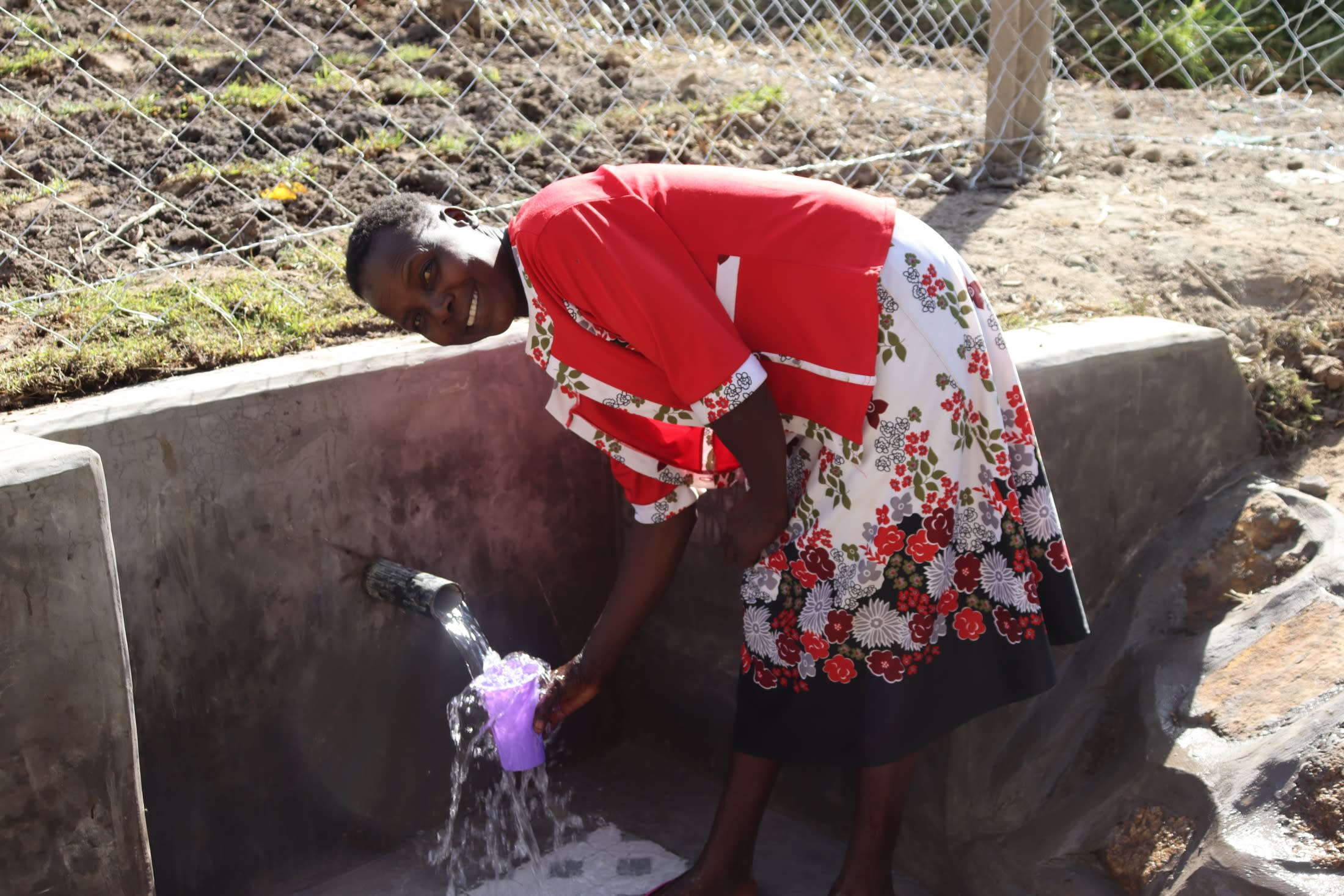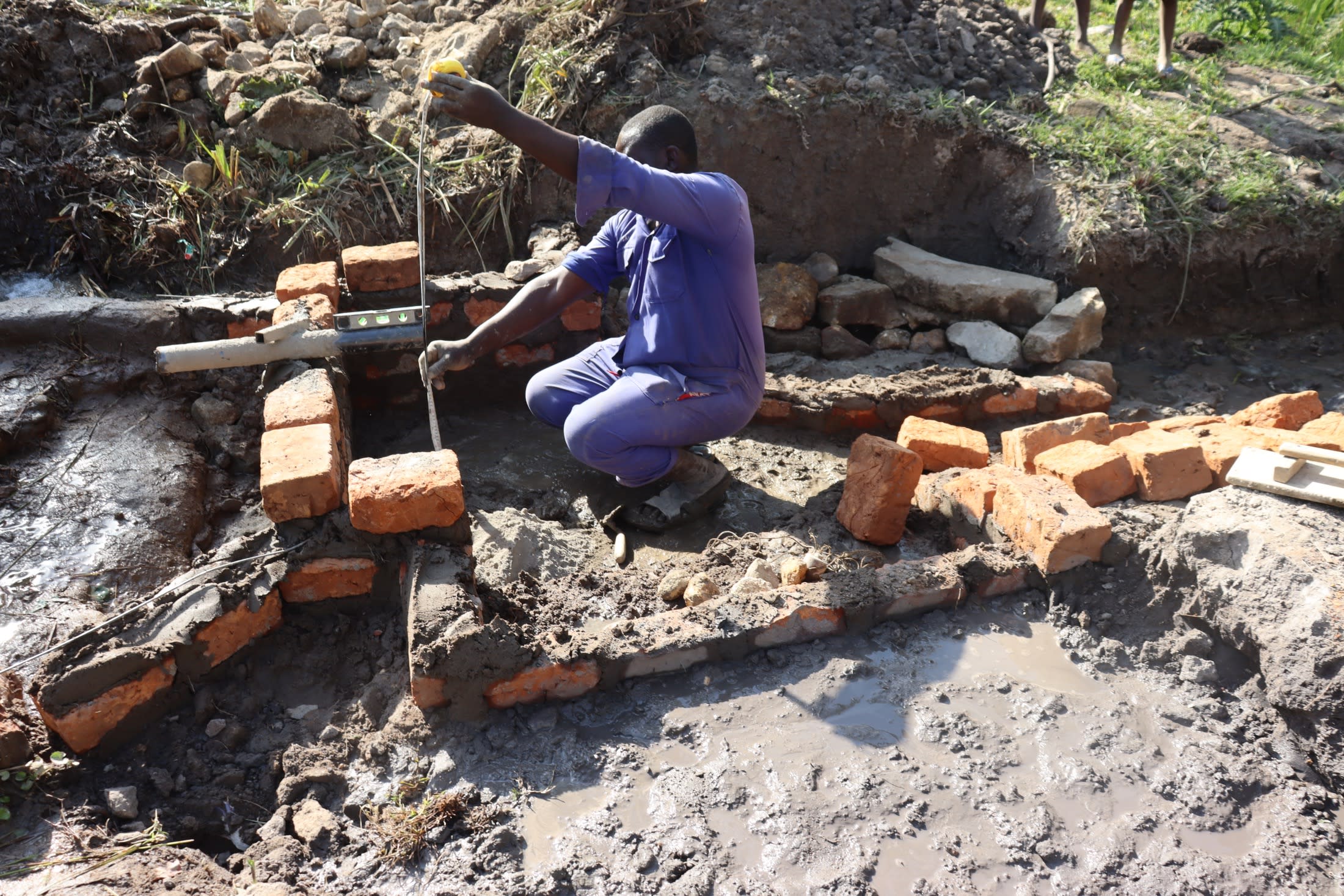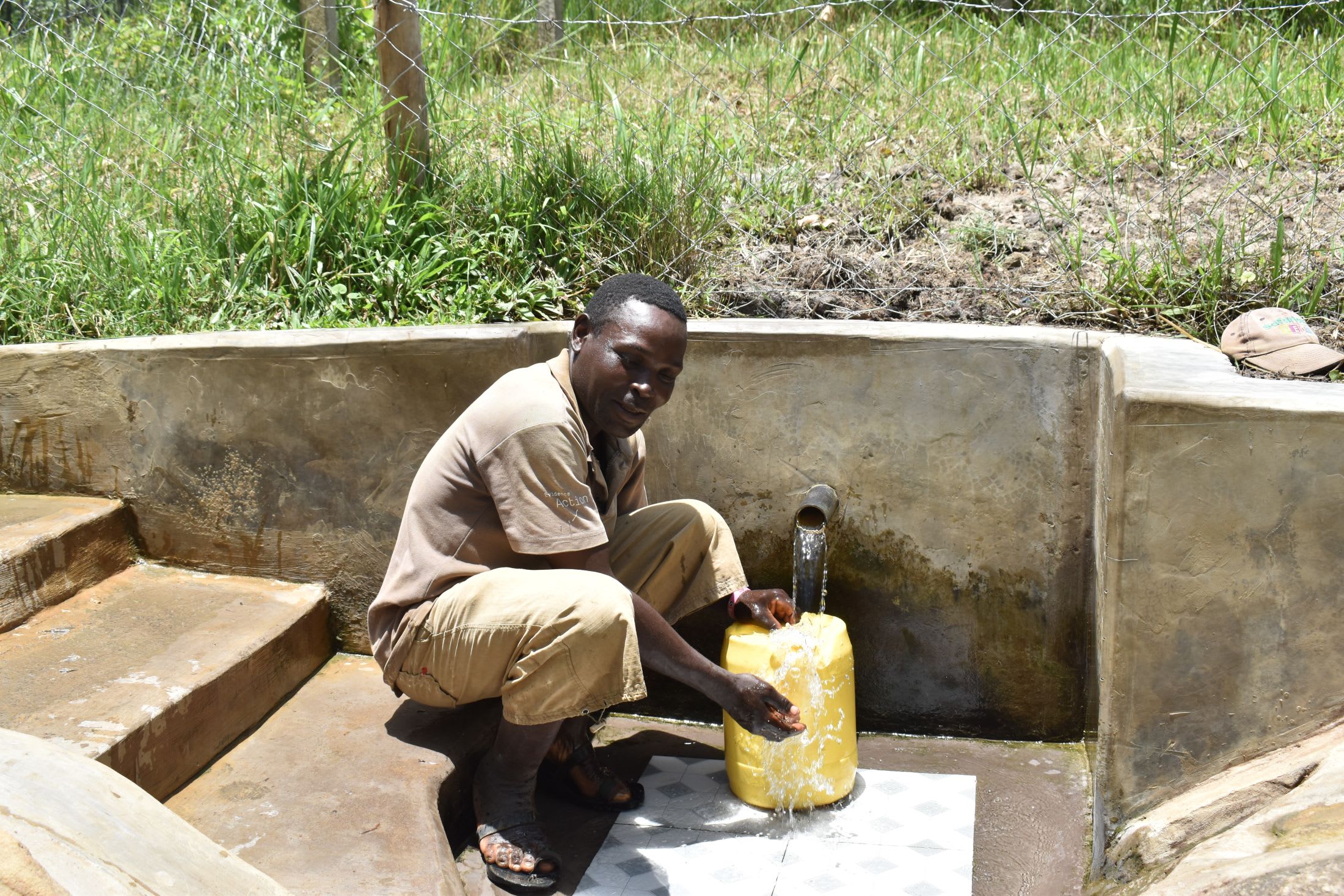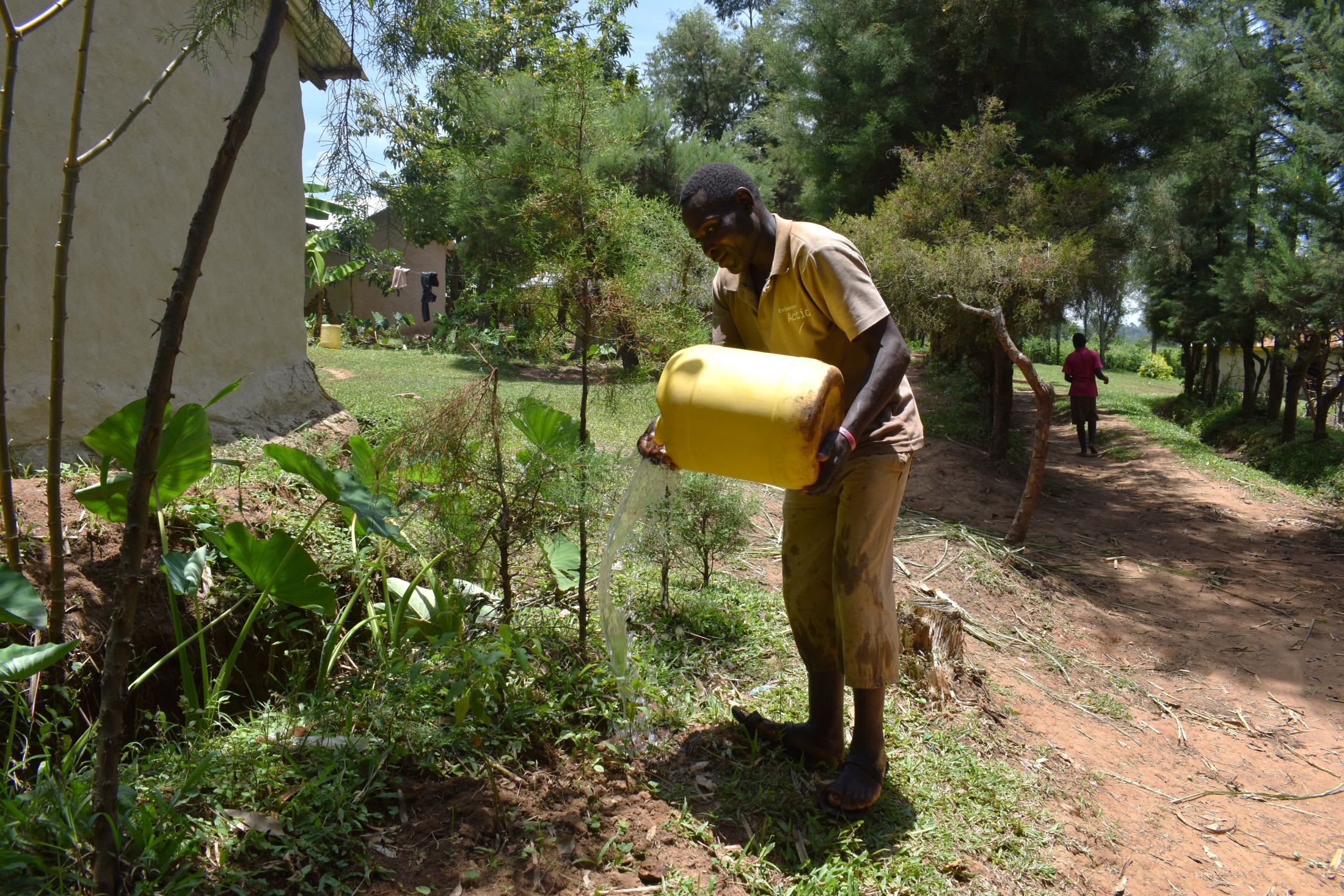Jeremiah Iyadi Spring serves the 245 community members living in this area of Bulupi.
In the past, community members came together to protect the spring but did not do so successfully. The water does not flow properly, safe access is challenging, and the water being consumed is contaminated.

There are no stairs nor side walls, and although they managed to put in a headwall, the water is not contained and bubbles up from the spring floor. Papyrus reed plants have covered the entire spring box area, which adds to the water contamination.
"The water point has no chlorine dispenser, and the stagnant water seen everywhere around automatically qualifies it as unsafe for drinking. I would not drink that water unless treated or protected," said our field officer Stella Inganji.
Interviewees report that drinking this contaminated water's most common health consequences are vomiting, diarrhea, and typhoid fever.
"The water point, as you can see, was partially protected with many openings that attract contaminations which affect our health," said 12-year-old Lavender W., shown below collecting water.

She continued: "[I] am just recovering from typhoid fever which I contracted some days back after drinking from the source. This is what community members here experience every time with no long-lasting solutions, so if the spring is protected, we will minimize these infections."
"I always try to boil the water before drinking, but it is hard to control my children from taking the water directly from the spring," said 39-year-old farmer Florence Navera, shown below, waiting her turn at the spring.
She continued: "This alone has affected my family a lot in terms of finances. For instance, last month, my younger child was vomiting and diarrhea, so I had to rush her to the hospital, and in the end, I used a lot of money for her treatment."

Hopefully, by protecting this spring properly, community members in this area of Bulupi will be able to regain their health, maintain their finances and efficiently and safely collect adequate water.
What We Can Do:
Spring Protection
Protecting the spring will help provide access to cleaner and safer water and reduce people's time to fetch it. Construction will keep surface runoff and other contaminants out of the water. With the community's high involvement in the process, there should be a good sense of responsibility and ownership for the new clean water source.
Fetching water is a task predominantly carried out by women and young girls. Protecting the spring and offering training and support will, therefore, help empower the community's female members by freeing up more of their time and energy to engage and invest in income-generating activities and their education.
Training on Health, Hygiene and More
To hold training, we work closely with community leaders and the local government to approve small groups to attend training. We ask community leaders to invite a representative group of people to attend training who will then act as ambassadors to the rest of the community to share what they learn.
The training will focus on improved hygiene, health, and sanitation habits in this community. With the community's input, we will identify key leverage points where they can alter their practices at the personal, household, and community levels to affect change. This training will help to ensure participants have the knowledge they need about healthy practices and their importance of making the most of their water point as soon as water is flowing.
Our team of facilitators will use various methods to train community members. Some of these methods include participatory hygiene and sanitation transformation, asset-based community development, group discussions, handouts, and demonstrations at the spring.
One of the most important issues we plan to cover is the handling, storage, and treatment of water. Having a clean water source will be extremely helpful, but it is useless if water gets contaminated by the time it is consumed. The community and we strongly believe that all of these components will work together to improve living standards here, which will help to unlock the potential for these community members to live better, healthier lives.
We will conduct a small series of follow-up training before transitioning to our regularly scheduled support visits throughout the year.
Training will result in forming a water user committee, elected by their peers, that will oversee the operations and maintenance of the spring. The committee will enforce proper behavior around the spring and delegate tasks that will help preserve the site, such as building a fence and digging proper drainage channels. The fence will keep out destructive animals and unwanted waste, and the drainage will keep the area's mosquito population at a minimum.

 Protected Spring
Protected Spring
 Rehabilitation Project
Rehabilitation Project





































